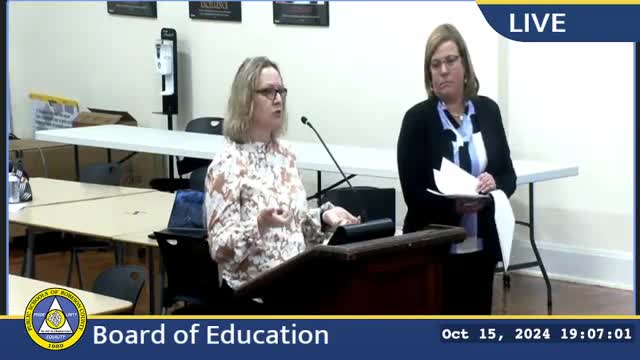Educators unite to tackle student achievement gaps
October 16, 2024 | Public Schools of Robeson County, School Districts, North Carolina
This article was created by AI summarizing key points discussed. AI makes mistakes, so for full details and context, please refer to the video of the full meeting. Please report any errors so we can fix them. Report an error »

In a recent government meeting, educators discussed strategies to address learning gaps among students, particularly as they transition from kindergarten to higher grades. The focus was on utilizing data to identify and fill these gaps, with an emphasis on the importance of early intervention to prevent future struggles in subjects like reading and math.
Teachers are being trained to leverage available resources from the K-8 curriculum to support students who are either falling behind or excelling. This includes using data from previous grade levels to tailor instruction and enrichment opportunities. The meeting highlighted the necessity of transparency in data sharing among educators to ensure that all teachers are aware of the specific needs of their students.
A significant point of discussion was the integration of vetted online resources for teachers, which are managed by the district's digital teaching and learning facilitator. This ensures that educational tools used in classrooms are safe and effective, particularly concerning student data privacy.
The meeting also addressed disparities in student performance across different schools, particularly among specific subgroups. For instance, while one middle school reported an 18% increase in proficiency for a particular population, another school saw a 7% decline. To tackle these inconsistencies, the district has implemented monthly professional learning communities (PLCs) where principals share successful strategies and identify challenges faced by their schools.
Additionally, the district conducts comprehensive needs assessments to analyze various data sources, including student performance metrics and teacher working conditions. This holistic approach aims to uncover underlying issues contributing to performance gaps, such as teacher attendance or student absenteeism.
While the comprehensive needs assessment results are not publicly shared, they are intended for internal use by school improvement teams to develop targeted action plans. The district emphasizes the importance of understanding the multifaceted nature of educational challenges, recognizing that solutions often require a nuanced approach tailored to each school's unique context.
Teachers are being trained to leverage available resources from the K-8 curriculum to support students who are either falling behind or excelling. This includes using data from previous grade levels to tailor instruction and enrichment opportunities. The meeting highlighted the necessity of transparency in data sharing among educators to ensure that all teachers are aware of the specific needs of their students.
A significant point of discussion was the integration of vetted online resources for teachers, which are managed by the district's digital teaching and learning facilitator. This ensures that educational tools used in classrooms are safe and effective, particularly concerning student data privacy.
The meeting also addressed disparities in student performance across different schools, particularly among specific subgroups. For instance, while one middle school reported an 18% increase in proficiency for a particular population, another school saw a 7% decline. To tackle these inconsistencies, the district has implemented monthly professional learning communities (PLCs) where principals share successful strategies and identify challenges faced by their schools.
Additionally, the district conducts comprehensive needs assessments to analyze various data sources, including student performance metrics and teacher working conditions. This holistic approach aims to uncover underlying issues contributing to performance gaps, such as teacher attendance or student absenteeism.
While the comprehensive needs assessment results are not publicly shared, they are intended for internal use by school improvement teams to develop targeted action plans. The district emphasizes the importance of understanding the multifaceted nature of educational challenges, recognizing that solutions often require a nuanced approach tailored to each school's unique context.
View full meeting
This article is based on a recent meeting—watch the full video and explore the complete transcript for deeper insights into the discussion.
View full meeting
